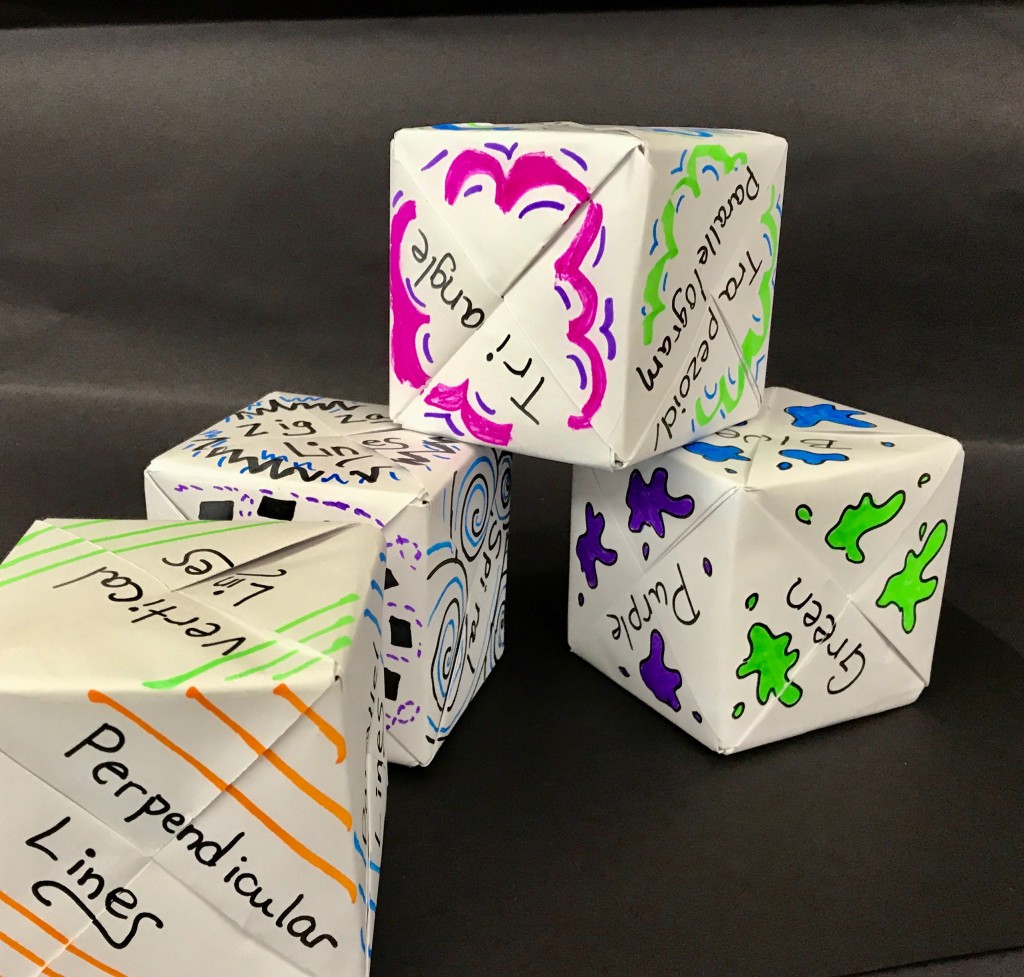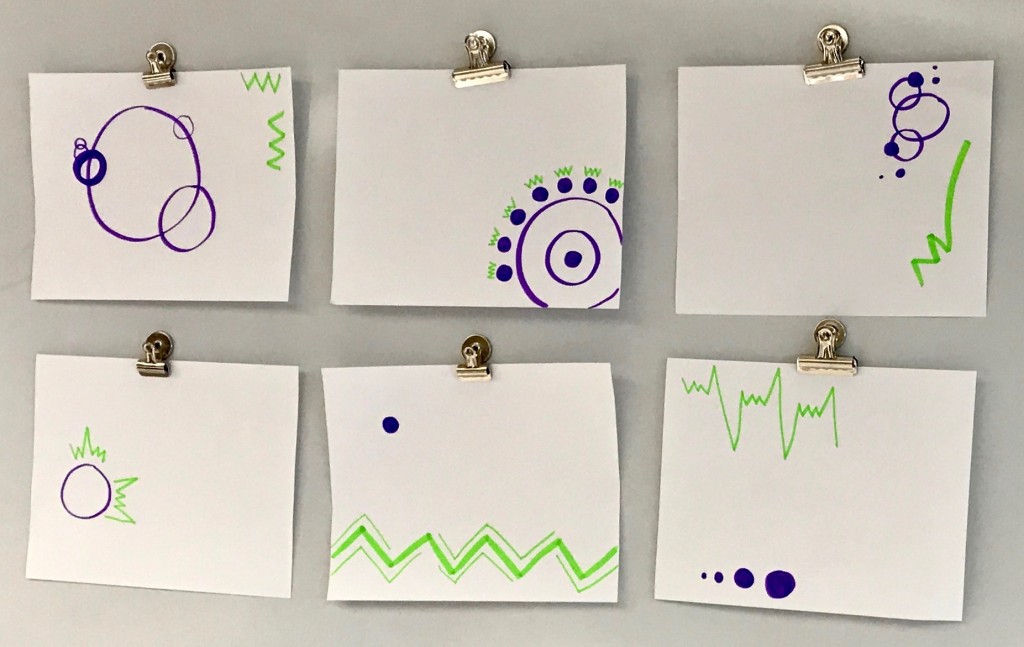Math Artwork Dice: Abstract Art
4 Min Read • STEAM
What if I asked each of you to bake a cake and supplied you with all of the ingredients to accomplish this task? What if I did not, however, provide you with a recipe? How would the cakes turn out? Would they all be the same or unique to the person baking it? They all included the same ingredients, but the outcomes were very different.
The point to this is, that even though the ingredients were the same, the results were unique and individual. This can occur with art as well.
Last year I wrote an article about ELA Artwork Dice, you can find it HERE. This year, my focus is Math. Using paper cubes as a random way to create a mathematically inspired work of abstract art is not only fun, but it also reinforces information, concepts, and definitions found in both content areas.
First… Make 6 Dice Cubes
You can find instructions for the Origami Modular Sonobe Cubes HERE.
- Cube 1: Directions of Lines
- Perpendicular, Parallel, Diagonal, Horizontal, Vertical, Intersecting
- Cube 2: Types of Lines
- Zig-Zag, Curved, Dotted or Dashed, Scribble or Continuous, Spiral, Scalloped or Wavy
- Cube 3: Shapes
- Rectangle or Square, Parallelogram or Trapezoid, Circle or Oval, Triangle, Hexagon or Pentagon, Octagon
- Cube 4: Form
- Cone, Sphere, Cube, Pyramid, Cylinder, Rectangular or Triangular Prism
- Cube 5: Color
- Red, Yellow, Orange, Green, Blue, Purple
- Cube 6: Color Families
- Warm, Cool, Complementary, Secondary, Primary, and Analogous Colors
Then… Play
General Advice
You can use white paper with markers, crayons, or colored pencils. I like to use black paper with colored pencils and construction paper crayons.
I display 6 different approaches to the same prompts to spark a conversation about how to be creative and unique with the same “ingredients.”
Students can make as many of the rolled objects as they like. They can be as large or as small as they want. Students can overlap shapes or forms, make a concentric shape design or go off the edge of the paper. These concepts make the composition more interesting.
One student rolls at a time and then passes the dice to the next in line. Students should not roll until everyone is quiet. Roll the Shape, Form, and Line Dice first and the Color Dice Second or students will be busy finding the colors and will not hear the next prompt. Try to keep the dice on the table, but if they fall off, name the side that is facing up. Nothing can be rolled twice, so keep going until there is a new prompt.
If it is a shape that students may not know or a color family that is unfamiliar, talk about it. How many sides does a pentagon have? What is the difference between a trapezoid and a parallelogram? What can you do to make a sphere and circle look different? What are analogous colors?
I find it fun to have students stand up and use their arms to demonstrate what perpendicular, parallel, diagonal, horizontal, vertical and intersecting lines look like. I also like to have students demonstrate what the types of lines look like by drawing them in the air with their fingers.
These works of art should be abstract. Try to discourage students from creating realistic pictures using these shapes and lines.
“This is an abstract work of art. It should not look like anything you see in real life besides themselves. It is not a realistic portrait of your grandma, so relax and go with the flow.”
Suggested Rounds
- First Round: Color and Shape Dice
- Second Round: Color and Types of Lines
- Third Round: Color Families and Directions of Lines
- Fourth Round: Color Families and Form
Flip… the Script
Every now and then, have students rotate their papers to create a work of art that can be seen from all angles. You can also add different directions throughout the artmaking process. For example, tell students to pass their paper to the person on their left for the next turn.
Reflection
After you create your abstract masterpieces, have students talk about their favorite aspects of the project. What did they learn that they did not know before? What would they do differently the next time? Have students critique the artwork of their classmates. Display the works of art and have students reflect on how each piece is different. What are the similarities? Have them select their favorite and give reasons why.







